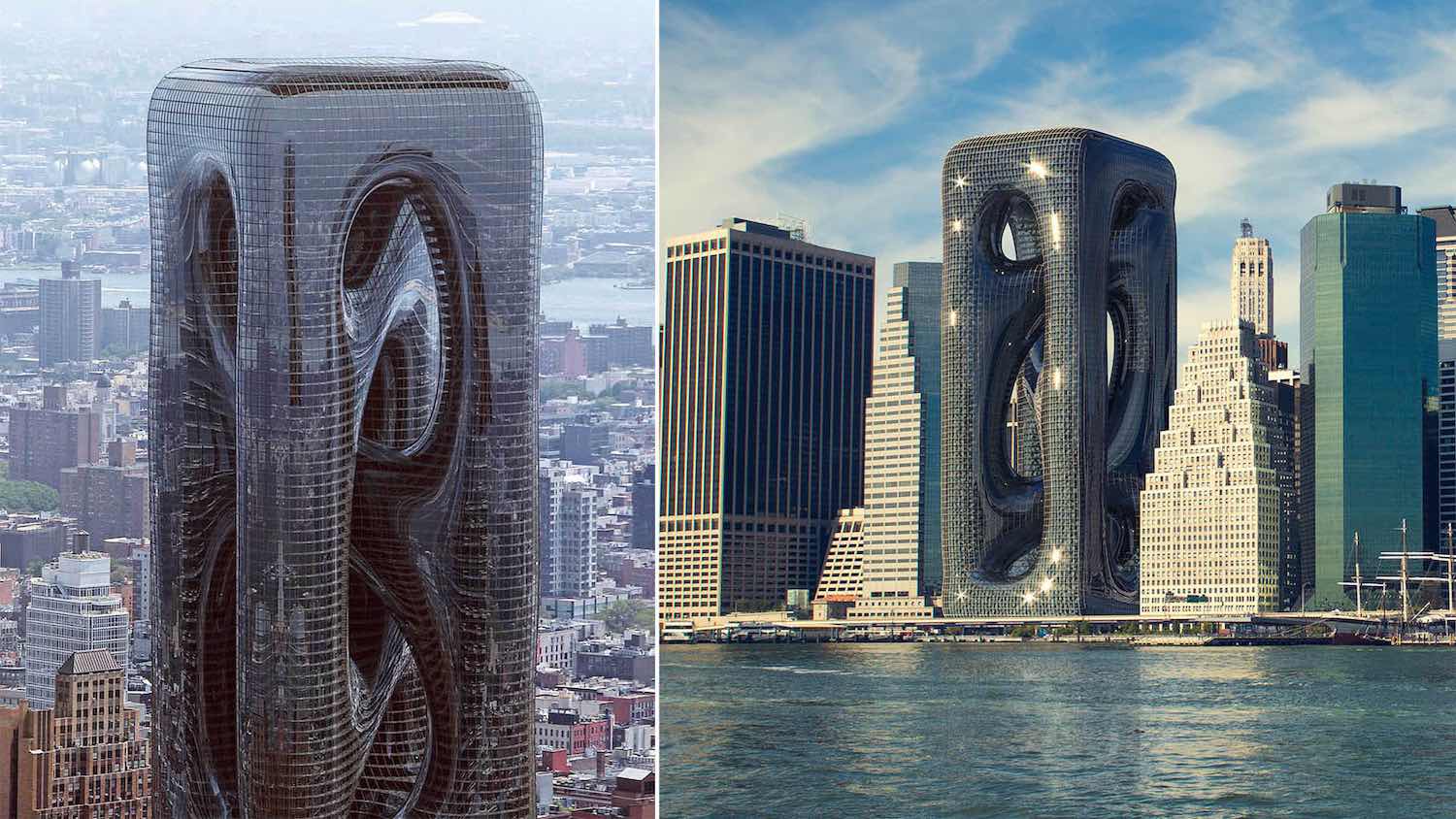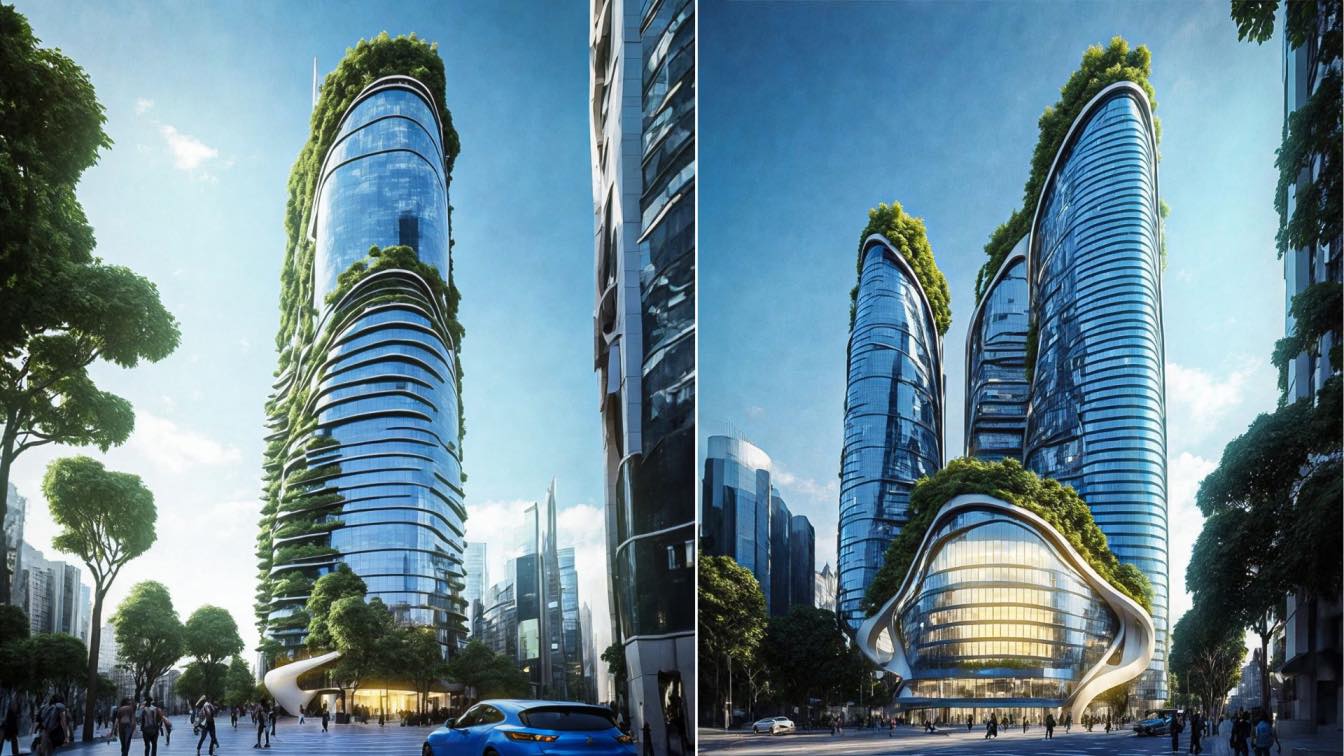Construction works at the Shenzhen Institute of Fincancial Technology have begun installing its sculptural façade. Located on a narrow site in the centre of Shenzhen’s Futian district, the tower’s composition is defined by its surrounding urban environment.
Annual paths of the sun’s rays across the site have been mapped and modelled, with set-backs introduced into the tower’s volume to optimise the amount of direct sunlight reaching the district’s streets and public plazas.
The Shenzhen Institute of Financial Technology is integral to the digital and cross-border payment networks of the People’s Bank of China. A key institution for Shenzhen, the city at the forefront of China’s technological innovation, the institute serves as an incubator and evaluation centre for the financial technologies which ensure Shenzhen’s continued success in developing new digital advancements that drive the global economy.
The Shenzhen Institute of Financial Technology Tower designed by Zaha Hadid Architects will accommodate the institute’s ongoing expansion to serve China’s fintech industry which is anticipated to grow at almost 20% each year throughout the coming decade.
The institute’s research and development laboratories, technology exchange, data centres, training campus, together with management, support and administrative departments, will be housed within the new 199m (46-storey) tower situated at the heart of China’s tech industry and served by adjacent stations of the city’s metro system.
Located on a narrow site in the centre of Shenzhen’s Futian district, home to many of China’s most innovative technology companies, the 76,000 sq. m tower’s composition is defined by its surrounding urban environment.
Annual paths of the sun’s rays across the site have been mapped and modelled, with set-backs introduced into the tower’s volume to optimise the amount of direct sunlight reaching the district’s streets, public plazas and existing neighbouring buidings.
The varying degrees of transparency and colour of the tower’s façades are informed by these distortions within the building’s volume. Composed of vertical and angled glazing mullions crafted in black and bronze colours, the façades emphasise the unique geometries generated by the design’s formal contours.
A series of interior atria link together floors to promote interaction and collaboration. Foliage within these connecting atria filter air contaminants while the rooftop garden provides a variety of sheltered spaces for events, exhibitions, gatherings and personal relaxation.
The tower’s envelope incorporates high performance thermal insulation with external fins that provide self-shading. Detailed analysis of exposure to direct sunlight has informed the unique composition of each façade to mitigate solar heat gain.
A smart building system will learn to predict the tower’s user patterns and occupancy levels throughout the day. Automated by AI, this system incorporates hybrid natural ventilation and will continually adjust the tower’s services for the optimum comfort of occupants at maximum energy efficiencies. Recycled steel and aggregates procured from local suppliers contribute to reducing the embodied carbon of the tower's structure.


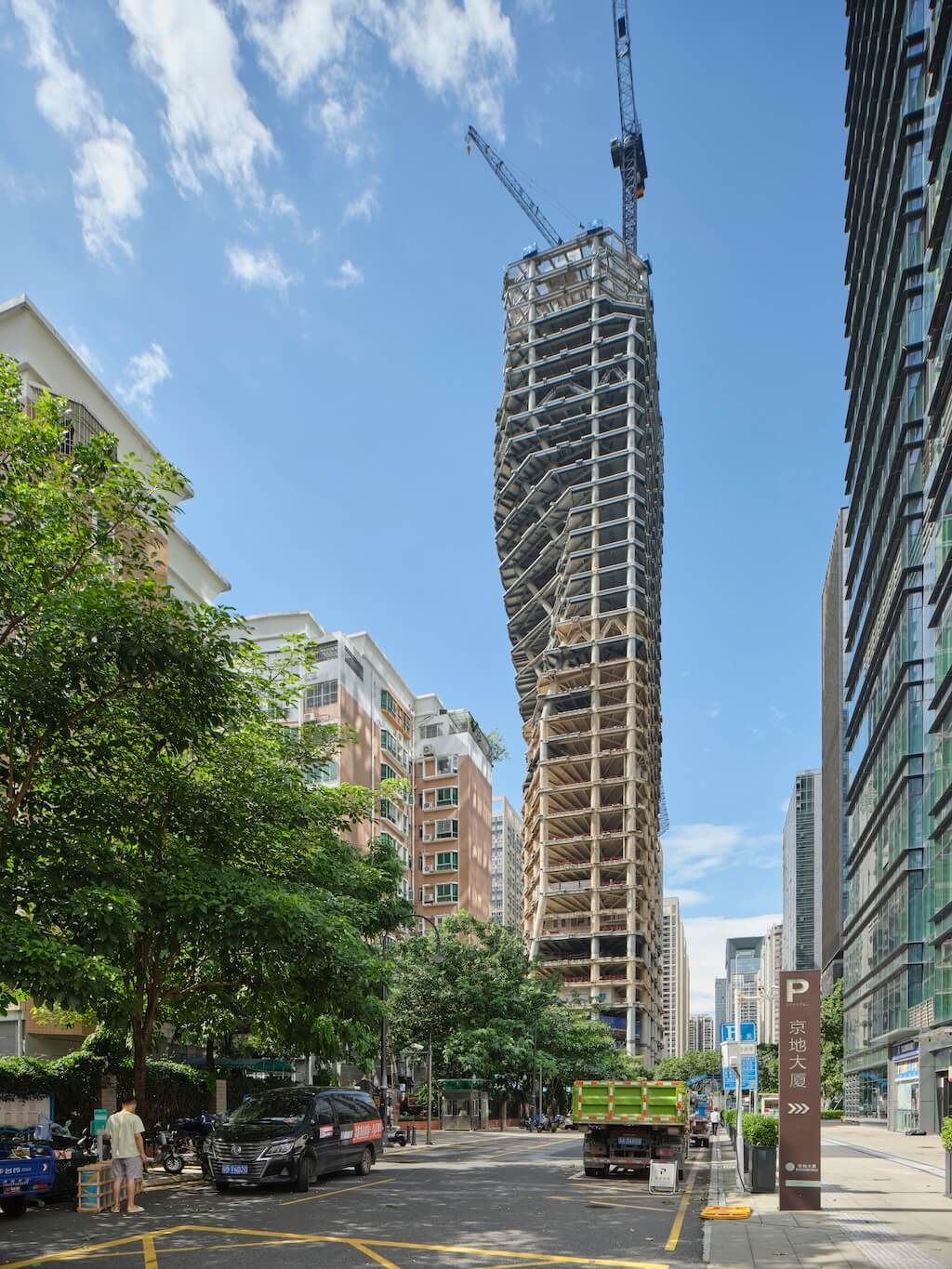









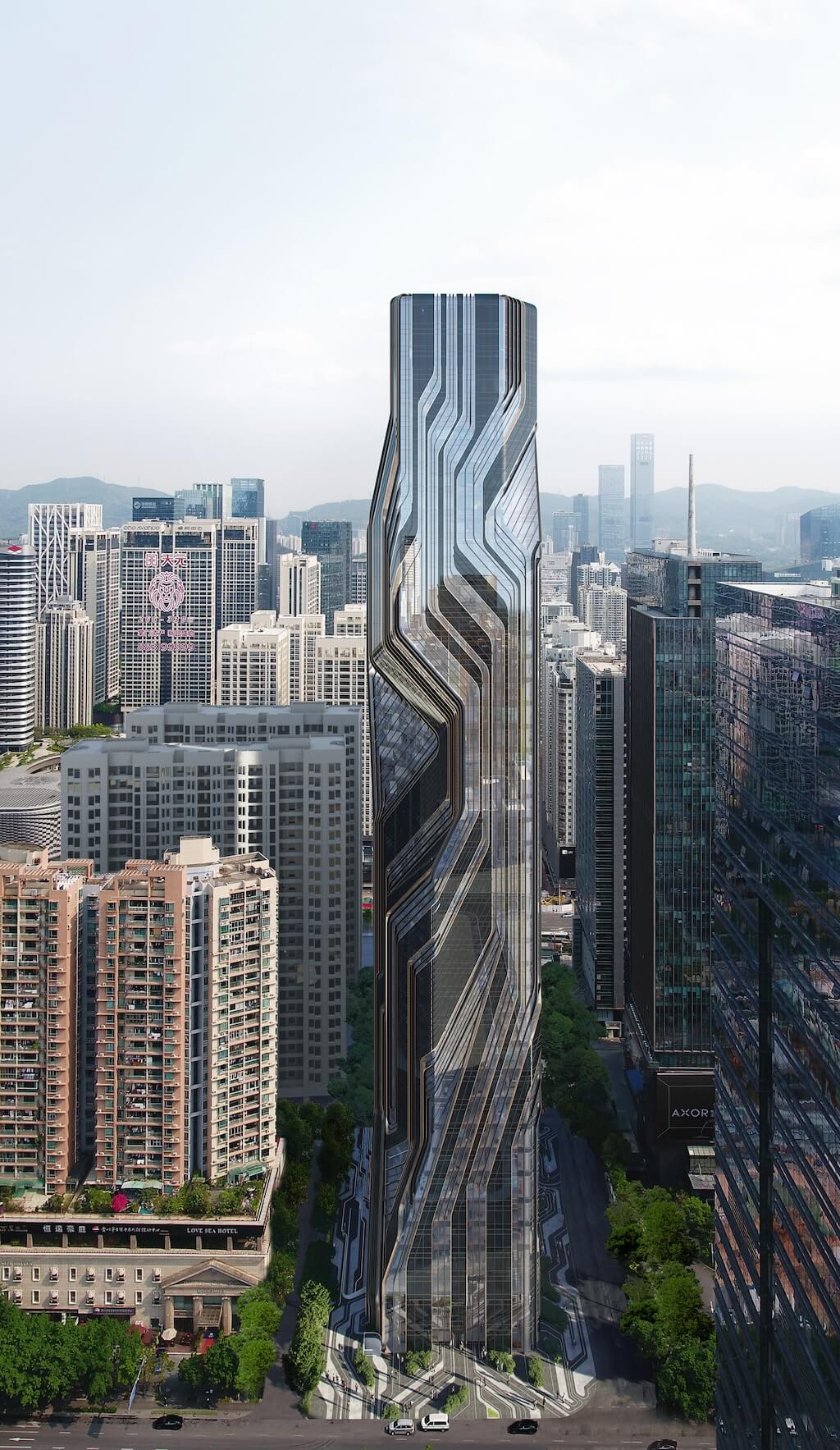

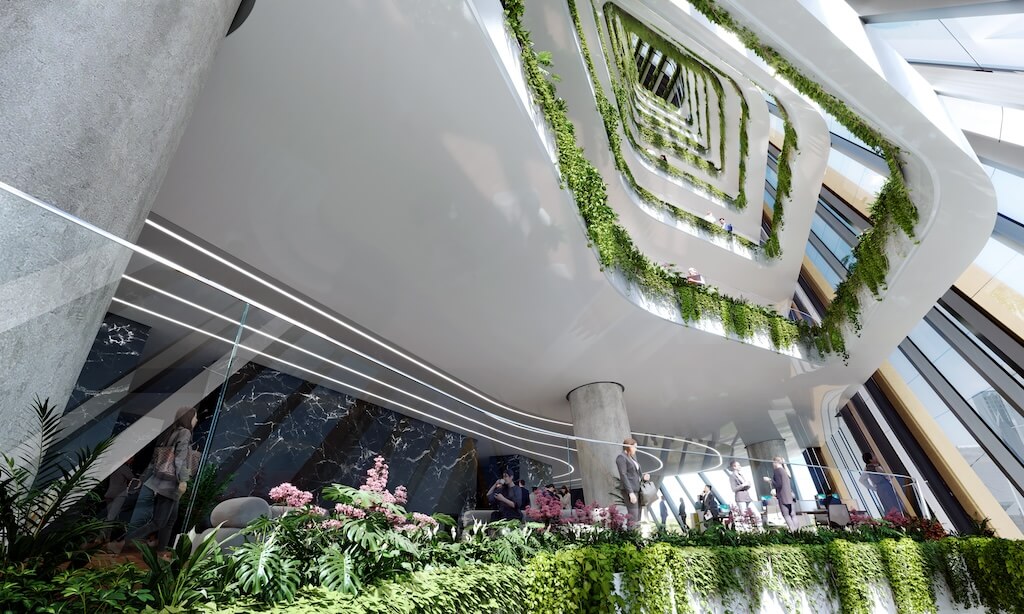
Project Team
Architect: Zaha Hadid Architects
Design: Patrik Schumacher
ZHA Project Director: Joris Pauwels
ZHA Project Associate: Yitzhak Samoun
ZHA Project Leads: Ping-Hsiang Chen, Alejandro Garcia Gadea
ZHA Site Team: Simon Yu, Jinqi Huang, Yushan Chen
ZHA Project Team: Iraklis Kourounis, Biagio Amodio, Maria Vergopoulou, Sharan Sundar, Beatrice Cordella, Nessma Al Ghoussein, Cristina Barrios Cabrera, Samantha Pavic
ZHA Competition Project Director: Joris Pauwels
ZHA Competition Associate: Yitzhak Samoun
ZHA Competition Project Architect: Yazhu Liang
ZHA Competition Project Leads: Alejandro Garcia Gadea, Haohao Chen
ZHA Competition Team: Iraklis Kourounis, Maria Vergopoulou, Sharan Sundar, Saman Dadgostar, Lorena Espaillat Bencosme, Uli Blum
Consultants
Local Architect: CSWADI (SD – PD Stage) / CABR (CD Stage)
Structural Engineers: CSWADI (SD – PD Stage) / CABR (CD Stage)
Quantity Surveyor: Hua Lun Cheng Construction Consultancy
General Contractor: China Construction Second Engineering Bureau
Façade Engineering: SPES
M&E Engineering: CSWADI (SD – PD Stage) / CABR (CD Stage)
MEP: CSWADI (SD – PD Stage) / CABR (CD Stage)
Fire Engineer: Shenzhen Electronics Institute Design Consulting Co., Ltd
Landscape Consultant: CSWADI
Site Supervision: CSCC
Project Management: CSCC



